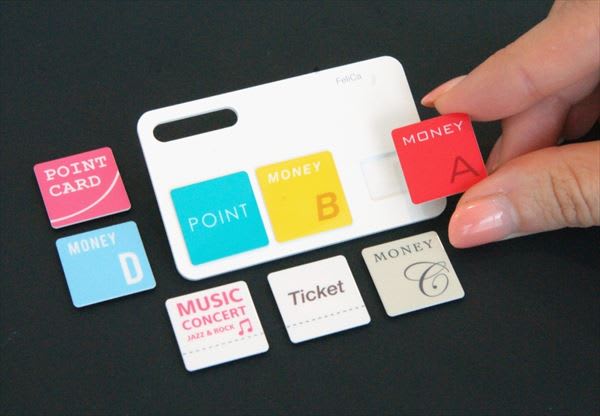
FeliCa(フェリカ)
ソニーが開発した非接触型ICカードの技術方式、および同社の登録商標
アイフォーンにIC乗車券機能、アップルが日本向け計画-関係者
米アップルはスマートフォン「iPhone(アイフォーン)」で公共交通機関の運賃支払いができる日本向け新機能を計画している。事情に詳しい複数の関係者が明らかにした。将来のアイフォーンには、ソニーが開発し日本で普及している非接触ICカード技術様式「FeliCa(フェリカ)」が採用されるという。
.
フェリカ・チップの搭載により、アイフォーンにバスや電車の乗車券を保存でき、ユーザーはICカードを使わなくてもスマホを自動改札機の読み取り部分にかざすことで乗下車できる。フェリカ・チップはこのサービスの基盤となる標準技術で、日本国内には運賃決済カードを提供する事業者が多数ある。
.
アップルのモバイル決済サービス「アップル・ペイ」に採用される近距離通信(NFC)技術は、北米や欧州、オーストラリアでは普及している。しかし、日本ではフェリカが圧倒的。関係者1人によると、アップルは複数の交通系ICカード事業者との提携を目指しており、日本ではSuicaとPASMOが主要プレーヤー。理論的にはアイフォーンのアプリ「ウォレット」にIC乗車券が登録されるという。計画は部外秘だとして同関係者は匿名を条件に明らかにした。
.
日本はアップルにとって直近四半期の売上高の8%、営業利益の11%近くを占めるため、重要なビジネスチャンスになる。アップルは9月に発表見込みの次期アイフォーンでこうした新機能を搭載することを計画してきた。しかし、日本の決済ネットワークとの協議がまとまらない場合、これらのIC乗車券機能は来年のモデルまで見送る可能性もあると関係者1人は明らかにした。
.
アップルの広報担当はコメントを控えた。
フェリカ・チップはIC乗車券だけでなく、自動販売機やコンビニエンスストアで広く受け入れられている電子マネーにも採用されている。アップルはこうした電子マネー取引のサポートで大手金融機関少なくとも1行と協議していると、関係者1人は明らかにした。
(Bloomberg 8月26日)
Apple Plans iPhone for Japan With Tap-to-Pay for Subways - Bloomberg
Apple Inc. is planning a new iPhone feature for Japan that will enable users to pay for mass-transit rides with their smartphones instead of physical payment cards. A future iPhone will include technology called FeliCa, a mobile tap-to-pay standard in Japan developed by Sony Corp., according to people familiar with the matter.
The FeliCa chip will let customers in Japan store their public bus and train passes on their iPhones. Users would then be able to tap their phones against the entrance scanners instead of using physical cards. While the FeliCa chip is the standard technology underlying the service, there are several different providers of transit payment cards based on the type of transit and areas within Japan.
The Near Field Communication technology powering Apple’s mobile-payments service, Apple Pay, is prevalent in North America, Europe and Australia, but the FeliCa standard dominates Japan with a penetration of 1.9 million payment terminals, according to the Bank of Japan. The terminals handled 4.6 trillion yen ($46 billion) in transactions in 2015. Last year, there were 1.3 million NFC terminals in the U.S. and 320,000 in the U.K., according to research from Let’s Talk Payments and the U.K. Cards Association.
Apple intends to work with multiple transit card providers, one person said. The major players there include the Suica and Pasmo networks. Theoretically, virtual representations of the transit passes would be stored in the iPhone’s Wallet application, said the person, who asked not be identified because the planning is private. The card companies sell access to transit services both as-needed and via monthly packages.
Apple’s opportunity in Japan is significant with the country alone representing 8 percent of the company’s total revenue and almost 11 percent of operating profit in the most recent quarter.
Apple has planned to launch these new features with the next iPhone models, which the company is set to unveil in September, according to people familiar with the matter. However, the company could hold back the transit card feature to next year’s model if discussions with the Japan-based payment networks fall apart, one person said. Apple is already at work on a major redesign of the iPhone for 2017 that focuses more heavily on the display by removing the Home button, according to a person familiar with the matter.
An Apple spokeswoman declined to comment
The FeliCa chip is able to process a transaction in 0.1 seconds, according to Sony. Super-swift transaction speeds are critical for adoption in the fast-paced environment of Japan’s transit network, the person said. Each sale over Apple Pay currently goes through a server and requires bank approval -- which can slow the process.
In addition to supporting the transit-pass network, the FeliCa chip can also store e-money, an electric form of currency now widely accepted at vending machines, convenience stores and cafes in Japan. Apple is in discussions with at least one major financial institution to support these e-money transactions, according to one of the people.
Revenue Opportunity
Apple Pay first launched in October 2014 in the U.S. with the iPhone 6 and has since expanded to Australia, Canada, China, Hong Kong, France, Singapore, Switzerland and the U.K. Apple Pay contributes to the company’s rapidly growing services business, which grew 19 percent year-over-year to about $6 billion in the fiscal third quarter.
Earlier this month, Apple struck a deal with Japan-based phone carrier KDDI to allow customers to bill iTunes purchases to their phone service bill instead of directly to their credit card. Apple’s deal with the Japanese carrier is indicative of Apple’s payment-related negotiations with firms in Japan and follows up the company’s work on activating carrier-based iTunes billing in Germany, the U.K., Russia, Switzerland, and Taiwan.
In tandem with the upcoming mobile payments launch for Japan, Apple is preparing to ship mass-transit navigation support for Japan in its iPhone Maps application, the company posted on its website in July. This feature, coming in iOS 10 later this year, will allow users to find departure and arrival times for transportation across the region.



























※コメント投稿者のブログIDはブログ作成者のみに通知されます